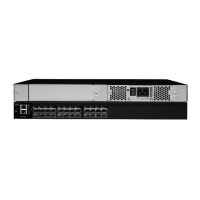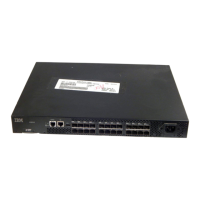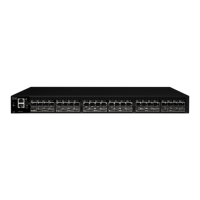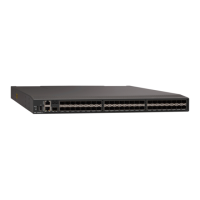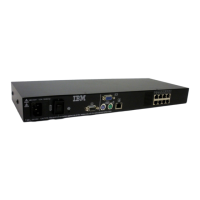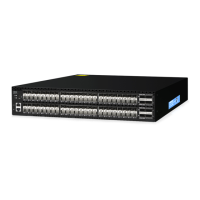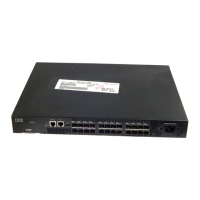IBM System Networking SAN24B-5 Switch 6
Monitoring and Alerting Policy Suite (MAPS
simplifies fabric-wide threshold configuration and
monitoring. MAPS allows organizations to leverage pre-built rule/policy-based templates. The result is
a simple, two-step process for applying thresholds and alerts to ports and switches. Organizations
can configure the entire fabric (or multiple fabrics) at one time using common rules and policies, or
customize policies for specific ports or switch elements—all through a single dialog. The integrated
dashboard displays an overall switch health report, along with details on out-of-policy conditions, to
help administrators quickly pinpoint potential issues and easily identify trends and other behaviors
occurring on a switch or fabric.
ClearLink diagnostic technology (D
Port
ensures optical and signal integrity for Gen 5 Fibre Channel
optics and cables, simplifying deployment and support of high-performance fabrics. It leverages
ClearLink diagnostic port (D
Port) capabilities of Gen 5 Fibre Channel platforms.
Bottleneck Detection
identifies and alerts administrators to device or ISL congestion as well as
abnormal levels of latency in the fabric. This feature works in conjunction with IBM Network Advisor to
automatically monitor and detect network congestion and latency in the fabric, providing visualization
of bottlenecks in a connectivity map and product tree, and identifying exactly which devices and hosts
are affected by a bottlenecked port.
Integration into IBM Network Advisor
provides customizable health and performance dashboard
views to locate problems faster, simplify SAN configuration and management, and reduce operational
costs.
Critical diagnostic and monitoring capabilities
help ensure early problem detection and recovery.
Non-intrusive and nondisruptive monitoring on every port
provides an end-to-end view of the entire
fabric using capabilities integrated into the hardware. This allows sophisticated monitoring without
imposing an additional burden on switches with frequent polling activity.
Forward Error Correction (FEC
enables recovery from bit errors in ISLs, enhancing transmission
reliability and performance.
Credit Loss Recovery
helps overcome performance degradation and congestion due to buffer credit
loss.
Real-time bandwidth consumption by hosts or applications on ISLs
helps easily identify hot spots and
potential network congestion.
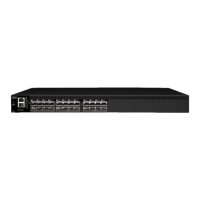
